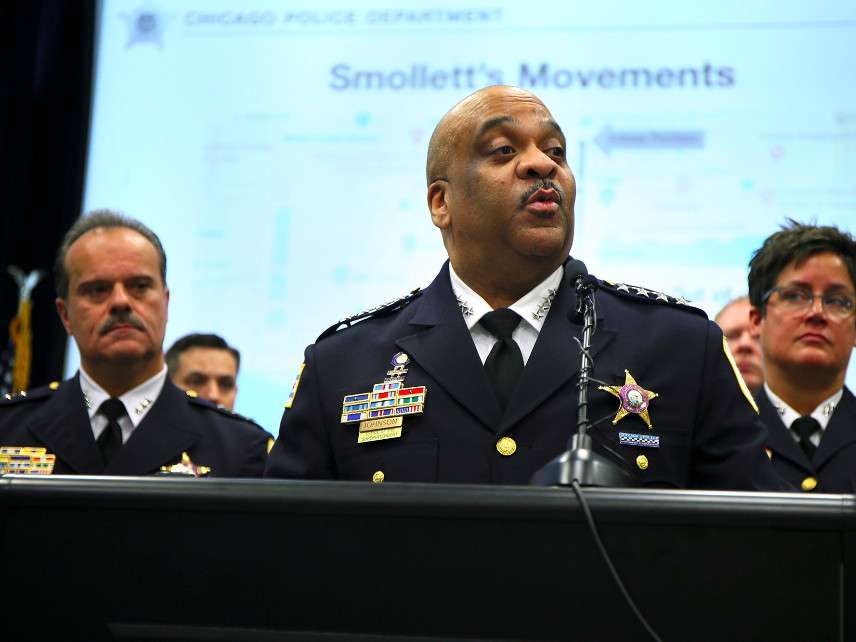Stop Letting People Lie to You About Hate Crime and Human Trafficking Spikes
Government statistics often show more reports of both. That doesn't mean either is on the rise.

Presidential candidates, TV pundits, and others keep trying to contextualize actor Jessie Smollett's false assault report by saying that even if this one wasn't true, hate crimes are on the rise in America. Just look at the most recent FBI statistics, they say. Similarly, human-trafficking tall tales—like this week's Uber sex trafficker that wasn't—tend to provoke comments about how even if this particular case isn't true, such crimes are a growing problem: Why, just look at the data!
The problem with both of these claims is simple: Our data sets keep expanding. We have higher numbers of incidents, but we also have more and more police agencies participating in the voluntary reporting system.
In 2017, there were around 1,050 more bias-based incident reports than the previous year—a 17 percent rise. There were also around 1,000 additional agencies reporting. As Robby Soave wrote last fall, "this means it's not obviously the case that hate crimes are more prevalent in 2017. Maybe the government just did a better job of counting them."
In 2016, there were 271 more incidents deemed hate crimes than in 2015, with 257 more law enforcement agencies reporting. As I pointed out when those data came out, "the number of hate crime classifications was higher in 2016 than in any of the four preceding years" but "lower than in 2011 and significantly down from 2006-08." There were also fewer victims in 2016: 7,615, down from 9,652 in 2006.
We saw no significant rise in hate crimes from 2004 and 2015, either. A Bureau of Justice Statistics study found that "the rate of violent hate crime victimization" in 2015 "was not significantly different from the rate in 2004" and that this "held true for violent hate crimes both reported and unreported to police."
Even these numbers are somewhat ambiguous. They represent police investigations opened, not necessarily incidents where a suspect was ever confirmed. So we could be dealing with false positives.
The FBI has been collecting human trafficking data since just 2013. For a few years, these numbers, too, kept increasing as a growing number of agencies submitted the voluntary trafficking data to the feds. Last year, however, the numbers were actually down, despite another increase in the number of jurisdictions submitting data.
In 2016, 56 juveniles and 916 adults were arrested on labor or sex trafficking charges, according to FBI-gathered data from state and local police agencies. In 2017, 49 juveniles arrested were arrested and 643 adults were arrested. There were a total of 1,196 suspected offenses reported in 2016 and just 1,220 in 2017.
Another measure people often reference is the number of "cases" referred to the government-funded national human trafficking hotline, run by the Polaris Project. This is an exceedly poor measurement to begin with, since a case just means any call, email, or message to the hotline about a potential incident. But beyond that, the hotline has been posted in an ever-increasing number of places since its inception. Successive states have passed laws requiring that it be posted in various public places and private businesses, and the federal government has promoted it in an increasing number of awareness materials. Having gone from a relatively obscure number to something legally required to be posted all over the place, it got more calls. Like the hate crime "spike," this tells us nothing about the reality or prevalence of human trafficking.